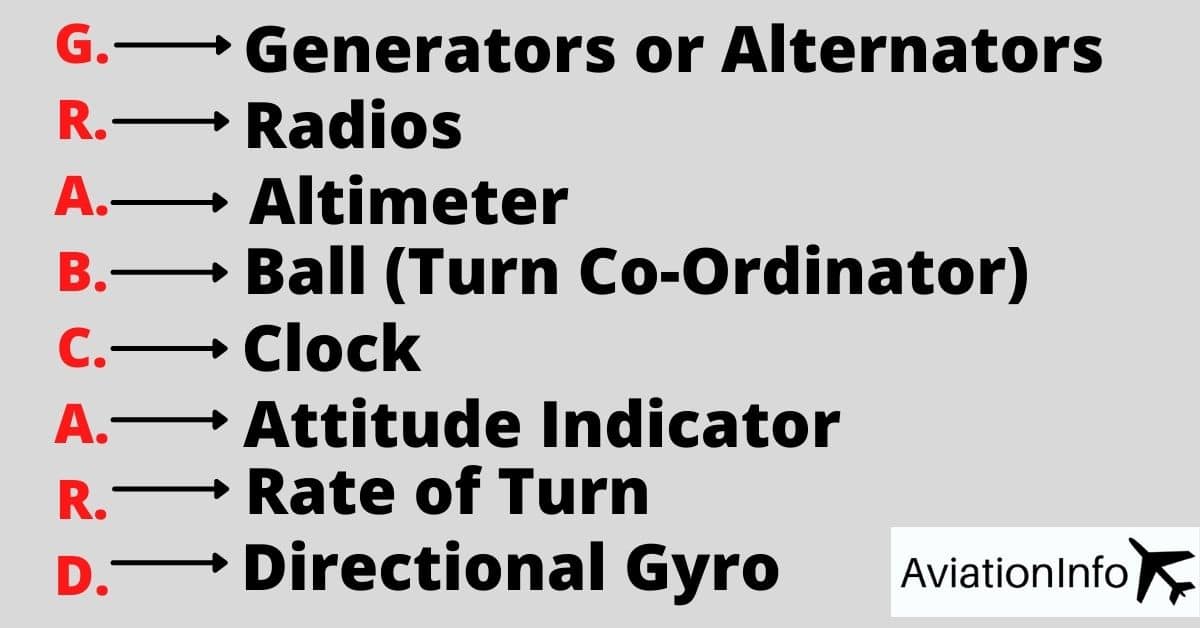In the aviation industry, there are a plethora of acronyms that pilots use to remember key elements of checklists and procedures.
In the world of IFR, there is a criterion in regards to onboard equipment that is required to be operational when flying on instruments.
Perhaps the most useful acronym to keep in mind when carrying out IFR-related checklists is GRABCARD.
Generator or Alternator
Required to power basic systems such as radios and avionics, the generator/alternator provides continuous electric current to the aircraft whilst the engine is running.
It allows for various electrical systems onboard the aircraft to be used throughout the flight. This is particularly important for the use of navigational radios fitted on aircraft.
Radios
Used for both communications and navigational purposes, radios allow for the aircraft to transmit and receive signals to/from ground-based stations.
When navigating via VOR and other on-ground navigational aids, the pertinent frequency to the ground station must be selected on the radio stack.
Altimeter
Under IFR conditions, visual, external references are not used to gauge aircraft altitude. Onboard altimeters that provide altitude readings are used to navigate.
The correct operational status of the altimeter is integral to the safe operation of the aircraft.
Ball (Turn-Coordinator)
In order to make coordinated turns, a turn coordinator is fitted in the aircraft. This gauge provides guidance cues in regards to the yaw corrections provided in order to execute the coordinated turn.
The location of the ball (from left to right) corresponds with the required rudder input in order to counteract the change in direction.
The coordinated status of the turn can be verified by the ball returning to the center of the gauge.
Clock
To keep track of ETAs, time en route, and waypoint estimates, the clock on board is fitted to assist the pilot in noting and recording actual vs estimated timestamps.
It may also be used to record and monitor the duration of a turn.
The clock found on aircraft is also commonly referred to as the chronometer in many IFR-capable aircraft types.
Attitude Indicator
The attitude indicator provides the aircraft’s position in relation to the horizon. This indication is critical in flight conditions where there is no visual reference of the horizon available.
Rate of Turn
Commonly found on the turn-coordinator and artificial horizon gauges, knowing the rate of turn of the aircraft (in degrees) in relation to the current direction is integral. This ensures the aircraft is kept within a safe margin in relation to bank angle.
The lack of a rate of turn and attitude indications can contribute to spatial disorientation in IFR conditions. This particular situation has been a key factor in many fatal accidents.
Directional Gyro
More commonly known as Heading Indicators or HSI (Horizontal Situation Indicator), the directional gyro provides indications in regard to the heading and course of an aircraft.
Under IFR conditions, this is an essential indication to have for navigating via ground-based navigational aids and for flying via ATC-issued heading instructions.
This is an updated article. Originally posted on January 17, 2022 @ 9:21 pm

After visiting more than 60 countries, I have probably been on every type of plane there is and visited countless airports. I did my very first international solo trip to South Africa at the age of only 16 and haven’t really stopped traveling since.
Despite the adventurous travel itch, I do have a nerdy side as well – which is satisfied by writing about all things aviation “too boring” for my regular travel blog.
